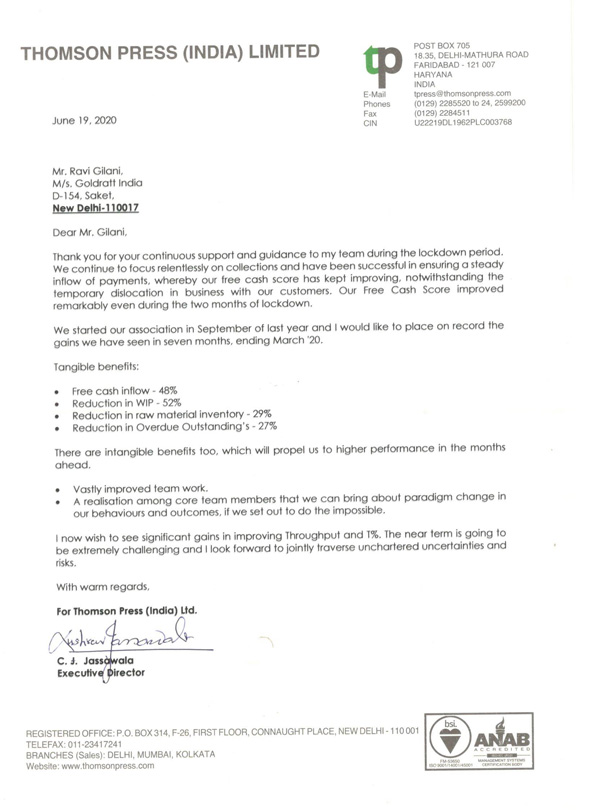Theory of Constraints (TOC) is a management philosophy that treats a corporation as an interlinked, interdependent system rather than just a collection of independent processes or functions. Dr. Eliyahu M. Goldratt, the creator of TOC, observed that just as the strength of a chain is dictated by its weakest link, the overall performance of any company is dictated by its constraint. If you can find a way to manage the constraint you can dramatically increase sales, cash, and profit without any significant investment.
Dr. Goldratt, was an educator, author, scientist, philosopher, and business leader. But he was, first and foremost, a thinker who provoked others to think. TOC was first introduced in the best-selling book, The Goal, an intriguing business novel that transformed the thinking of managers throughout the world.
Due to the overwhelming popularity of The Goal, most people assume that TOC is applicable to manufacturing only. Companies that have implemented TOC understand that it is a holistic philosophy, with as much application to strategy and marketing, as it does to supply chain and operations. The real strength of TOC lies in its Thinking Processes, that were first introduced in Dr. Goldratt’s book Its Not Luck (also known as The Goal II). The constraint of any system/ organization is defined in relation to its goal. Often, there is no upfront discussion and agreement on the organizational goal and its measurement(s) among the team members. Different team members have a different perception of the goal and its measurement depending upon which function they are responsible for. In most cases, team members are not aware of the effects that their actions will have on other functions. Therefore, the top team must learn the cause and effect relationships across the organization. Can each employee understand the impact of his/ her actions on the goal of the company?
An understanding of TOC metrics or operational measures, Throughput (T), Investment (I), and Operating Expenses (OE) can help each employee understand the effect of his/ her actions on the financial performance of the company. These metrics form the basic building blocks of the TOC methodology. TOC based metrics help in imparting financial literacy and aligning the entire top team. This helps the team in understanding the impact of any decision on Throughput, Investment, Operating Expenses (T, I, OE), and arrive at decisions swiftly. With the help of these metrics, each employee is able to understand the impact of his/her actions on the overall goal of the company. This leads to vastly improved team work and ownership.
TOC provides a simple and effective process for system improvement or five focusing steps, outlined
below.
Five Focusing Steps
1. Identify the constraint
2. Decide how to exploit the constraint
3. Subordinate to the constraint
4. Elevate the constraint
5. If the constraint has shifted, go back to Step 1. Do not allow inertia to become the constraint!
Over the last 40 years, TOC has evolved from a methodology primarily used in operations, to one that has applications across all functional areas such as production, supply chain, distribution, projects, sales and marketing, strategy and tactics. It has been applied across sectors such as automotive, steel, pharmaceutical, consumer goods, electronics, retail, apparel, packaging, construction, aerospace and defence, software, insurance, hospitals, and schools.
TOC’s production scheduling solution Drum Buffer Rope (DBR) helps in reducing lead time by a factor of 2-6. This is done by following simple logistical procedures, and applying the five focusing steps to the identification of bottleneck, followed by exploitation and subordination. Most organizations are able to get 30-40% additional output without adding any new resources.
In projects environment, the application of Critical Chain Project Management (CCPM) has helped several organizations to reduce project lead time by 20-40%, thereby, enabling them to complete projects early, and within budget.
















































